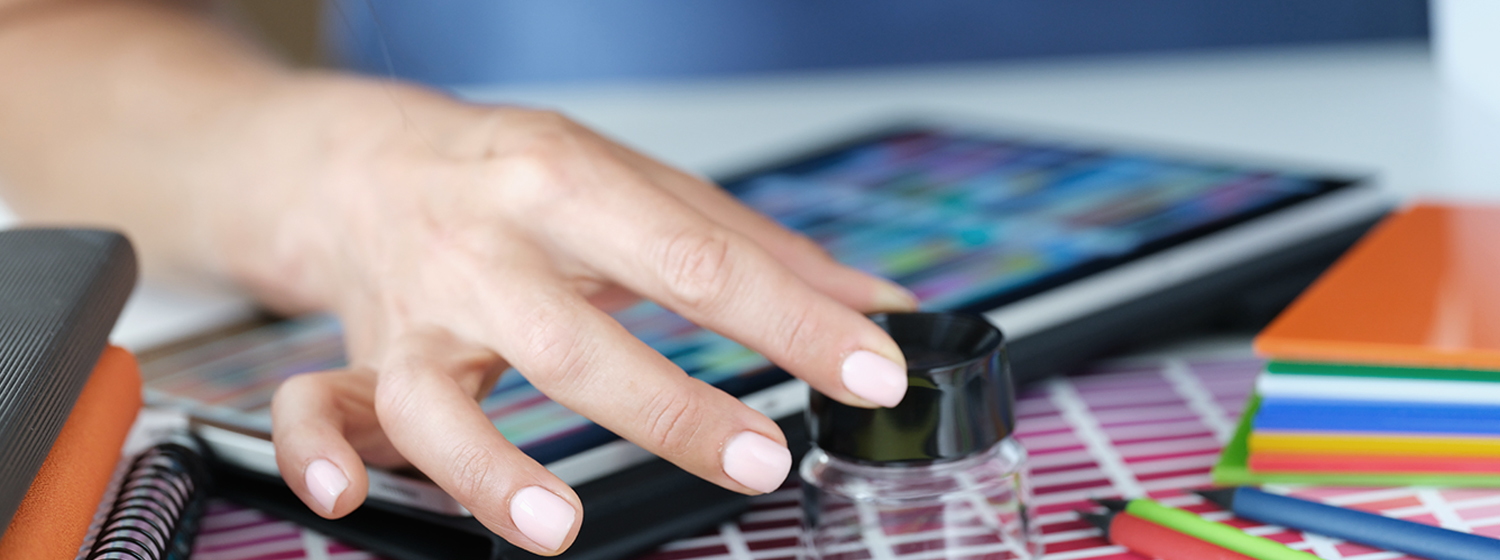Digital printing on corrugate has come a long way since it was a mere idea decades ago. But as we’ve made our way forward using upgraded technology to successfully print high quality graphics on to corrugate, it’s important to understand how we got here to fully appreciate the potential for the future. Let’s take a journey through time with this four-part series about the past, present and future of digital printing on corrugated.
“Digital Will Never Work”
The year is 2008. As I walked in the CEO’s office with bad news, I wasn’t sure what his response would be to the issue I was about to share. Our ancient Datatech design table had finally experienced a major mechanical failure - the kind of failure that makes one consider whether it’s worth repairing or not. As VP of Ops at the time, this was my issue to resolve.
“Why did it fail?” he asked.
“Well, we’ve run short runs through it nonstop lately. It doesn’t surprise me at all that it failed, it’s decades old. And to be honest, I think we have a bit of a business here with these short runs with short lead times,” I explained. I shared the increasing number of small jobs we had taken at good margins, particularly to serve emerging food and beverage customers in our Northern California market.
“Look into replacing it and let me know what it will cost. Talk to some of our friends and see what they have bought recently,” he ordered.
Immediately, I walked over to our most senior CSR who had all the right contacts to get me quick answers. I told her what I was trying to find out: Who had bought a design table recently nearby that we could see, and how much was it going to cost? She began forwarding me some of her contacts, saying with calm confidence, “You know, it would be really cool if we got one that also had some sort of simple plotter or printer on it. I have heard that there are some out there.”
What a great idea! With that simple comment, she sent me on a path that would transform the business, as well as my career. Initially, we were able to find a simple used printer for about $50K. Of course, we also still needed a modern design table. I returned to the CEO with my cursory findings and a simple ROI calculation to back up the request I was about to make.
“Here is the proposal for the new table, and here is one for a used digital printer.”
“Why do we need a digital printer?”
“Because of these.” I showed him dozens and dozens of estimates that we had created to provide pricing on orders under 500 in quantity. We had put the effort into understanding the customer’s requirements, created structural designs and graphics, estimates, got tooling costs, and then presented a ridiculously high total price for a few hundred boxes that a customer could never say “yes” to. This was predominantly a result of the tooling cost. Astute customers were pivoting to order these boxes unprinted, produced off our design table at a much lower cost than analog methods. For graphics, many of them were simply using their primary product labels on the boxes (such as wine bottle labels).

What struck us was the consistent market demand for high-graphic short runs, and our industry’s continued insistence that these orders had no place in our barn. That is when we saw an opportunity. When I told the CEO the digital printer was going to be an additional $50K, he was interested and told me to investigate further, and then his entrepreneurial spirit became engaged.
We quickly realized that a combination printer/cutting table wasn’t practical due to the limiting effect of the printing speed. We ended up meeting a salesperson from a sign supply company who introduced us to an organization that was based in gorgeous Meredith, NH that manufactured digital printers that were in widespread use, particularly in the signage industry. We went there to learn more and to see a demo of what we could potentially use in our own facility.
This is where I first encountered the prevalent attitude towards corrugated material as a printing medium for these digital presses. First, we had to send our own material from CA to NH because they did not feel comfortable sourcing it. Once there, we absorbed the ire of the demo machine operator. “Cardboard doesn’t work on these machines! I keep telling them that!” the operator humbly shared. My Plant Superintendent who travelled with me was just as entrepreneurial as our owner. He immediately spotted what was wrong with the material handling mechanism that was causing the issues. Because this was a hybrid machine, it could print both sheet-fed materials as well as roll-fed. So, he asked the operator to make some minor adjustments that showed promising enough results to move forward with next steps, and that was that.
Confident, but a little apprehensive, I gave the CEO the news upon our return. “I’m going to need $500,000 for this machine.” After he gathered himself, he was nothing but curious. As you recall, 2008 was a bit of a rough year for most of us, and our company was not spared. After showing him more about the machine and explaining the ways we could serve our customers with it, he paused and said, “The bank is going to think we’re nuts.”
Two months later, I stood at the doorway of his office as we had concluded one more heart-to-heart about this investment. We had been through the wringer with the bank to get this done, but we had succeeded. He started signing the paperwork but paused mid-signature. As he pointed the end of his pen at me, he asked, “You’re going to make this work, right?!” I will never forget it. I felt the rush of adrenaline as I confirmed, “Yes, I will.”

Within months of the machine being installed we had tried any and everything this machine had to offer. The Plant Superintendent and I practically camped out at the machine day and night trying to figure out it is best capabilities and how it could benefit us in as short of a timeframe as possible. While these digital printer manufacturers do an excellent job showing you all the things a digital press can do, they did not really understand how to sell it into a corrugated plant. They could explain how it could handle trade show booths graphics, banners, plastics, doors, ceiling tiles and more, but within a year we had stopped doing most of that. Our commitment to make this digital printer work in our favor was real, and we ended up figuring it out in about 8 months! At that time, we were generating the revenue we had pegged as our breakeven, and within 14 months the machine was oversold.
Our customers had found a field of dreams. They were able to begin regional marketing and co-branding campaigns in small quantities. No longer were our customers forced to go all in on “the lead horse,” or best market concept, in their marketing efforts. Of course, many of them still had a keen sense of their brand direction and stayed with it, but what we began to see was much smaller, more creative, more daring, more colorful marketing campaigns – all at a reasonable cost. They could seed the market with various concepts and watch the sales data pour in, and then react by placing larger orders on the versions of the displays or packaging that the market responded favorably to.
The success of the first year was incredible. As we investigated buying our next machine, our CEO shared some of our successes with our partners at our corrugated sheet feeder. He offered to help them with short runs for their customers. They asked questions about our throughput, and how many MSF/HR we could produce – the sort of things volume manufacturers need to know when evaluating a machine.
After hearing our responses one of our most respected partners concluded, “DIGITAL WILL NEVER WORK!”
Our CEO responded. “But it already is working…”
Their insistence that it would not work is exactly why we homed in on it as an organization. This was our space in the market, and ours alone. As we scaled up and added equipment, we realized where our biggest problem was erupting – prepress. Understanding and scaling prepress in digital was very much new to a typical corrugated plant, which we were. What came next would revolutionize our company.
Stay tuned for part 2!
This piece was contributed by Michael Musgrave, COO, Bay Cities


/BC_Logo2_White.png?width=300&height=83&name=BC_Logo2_White.png)